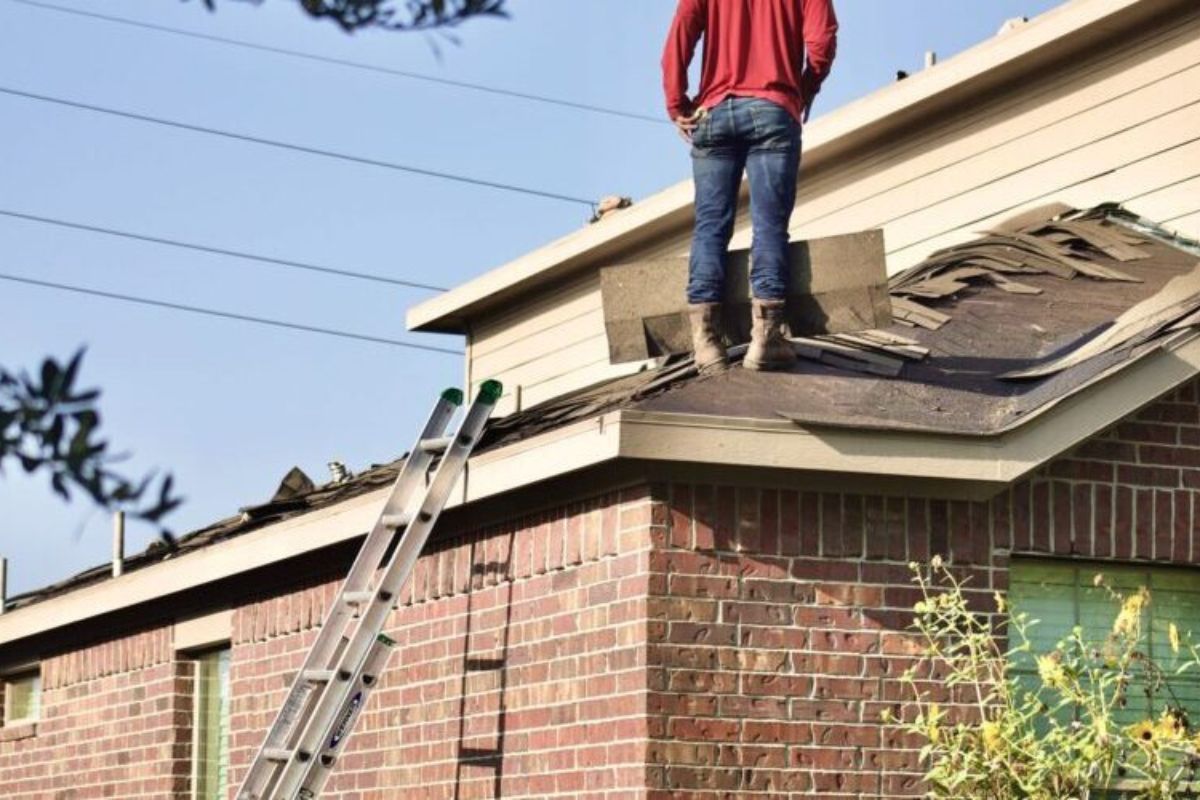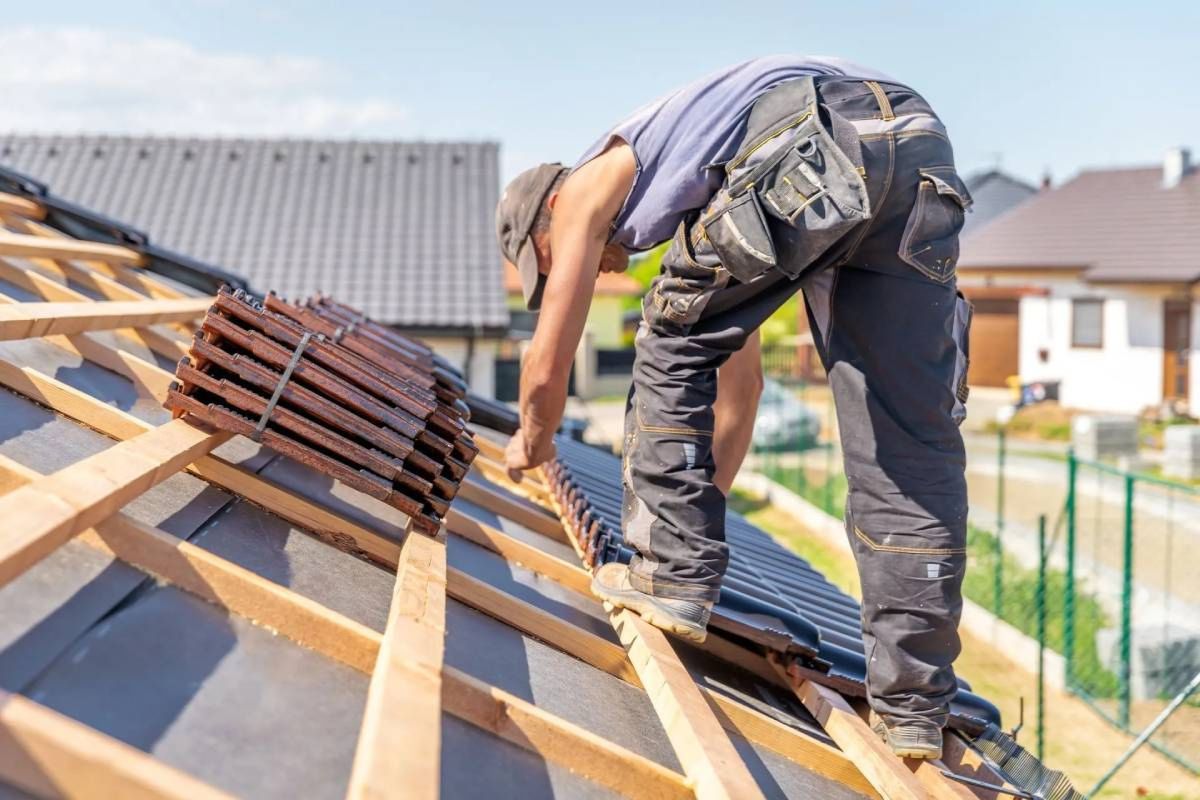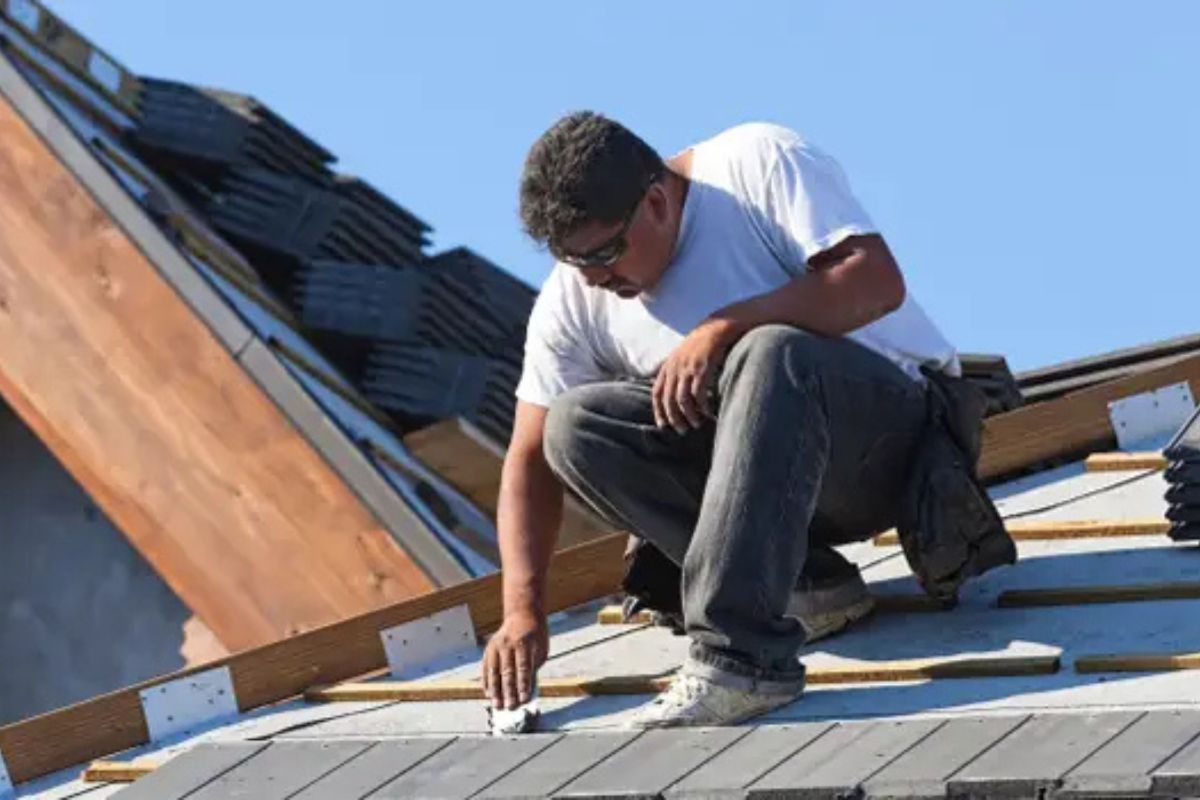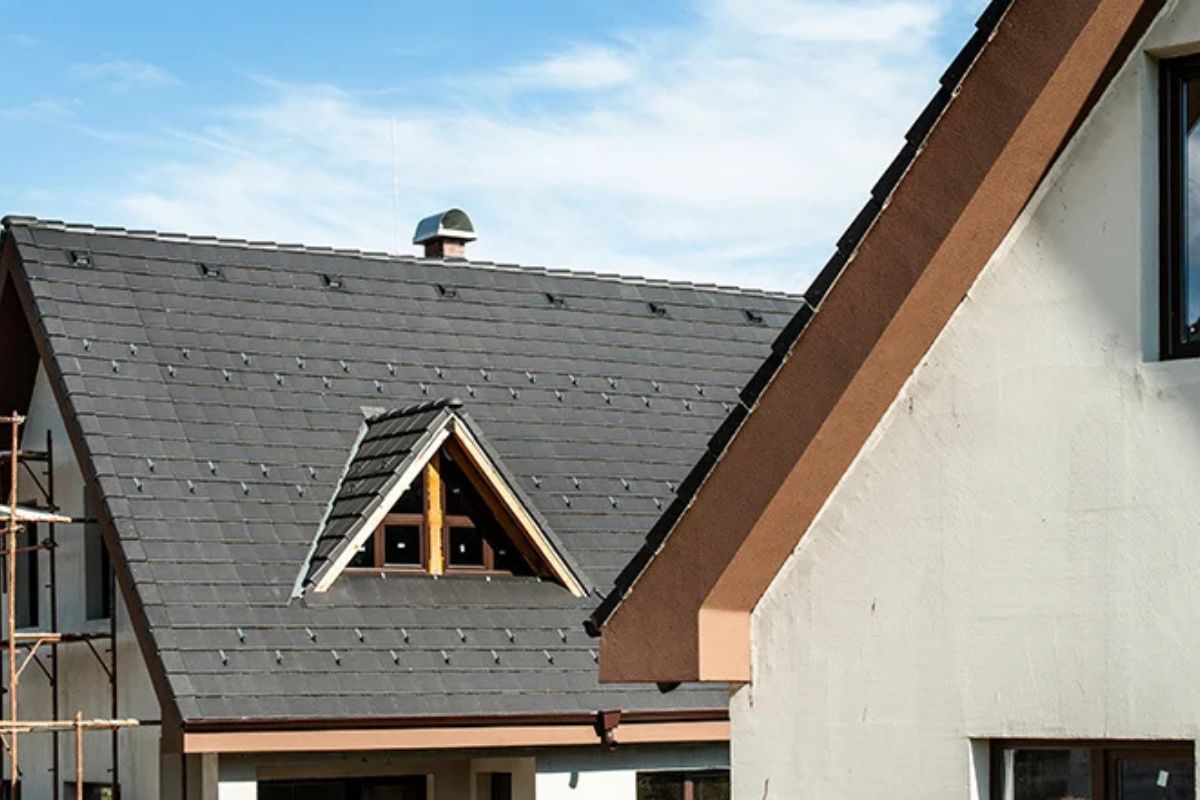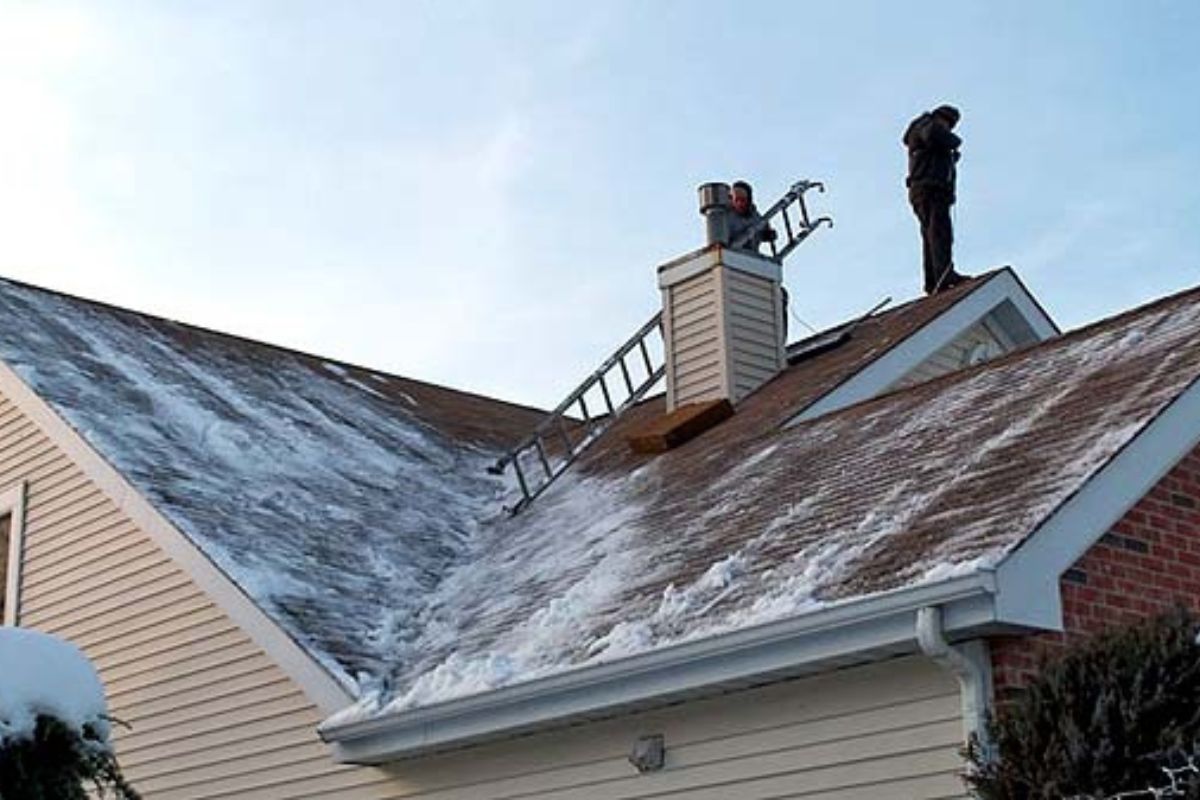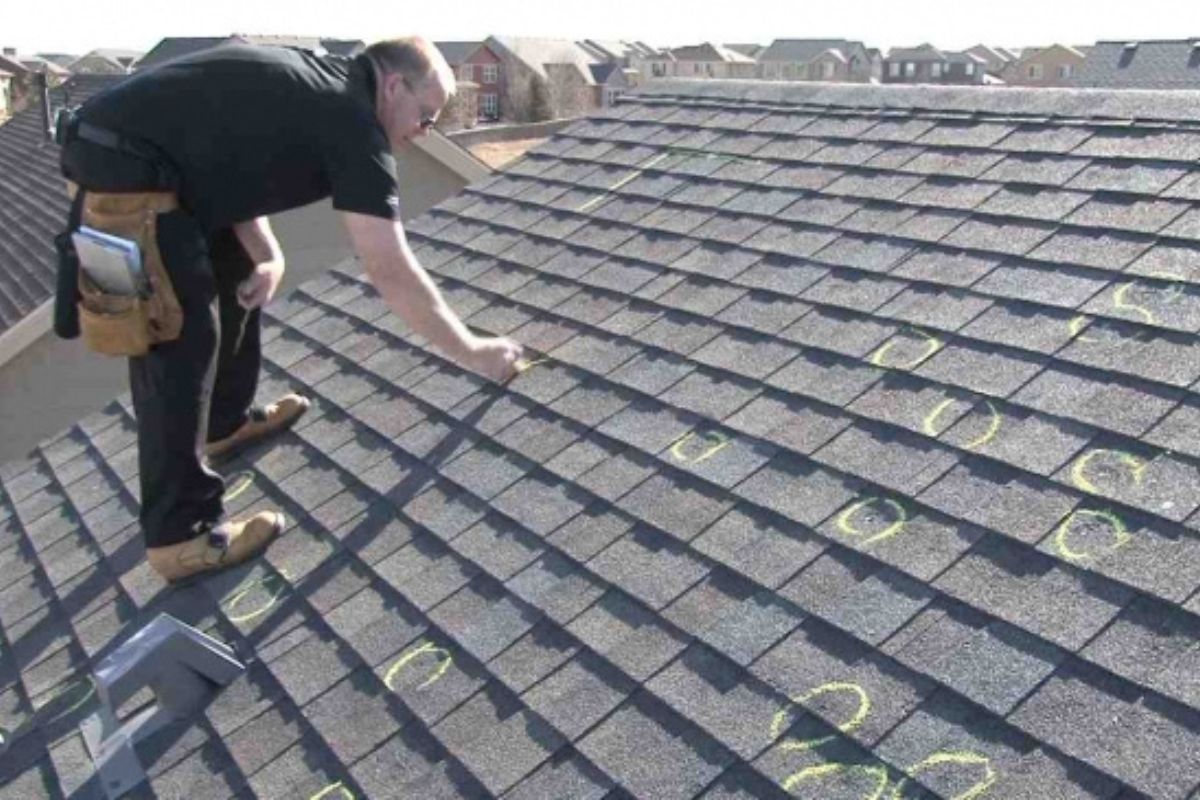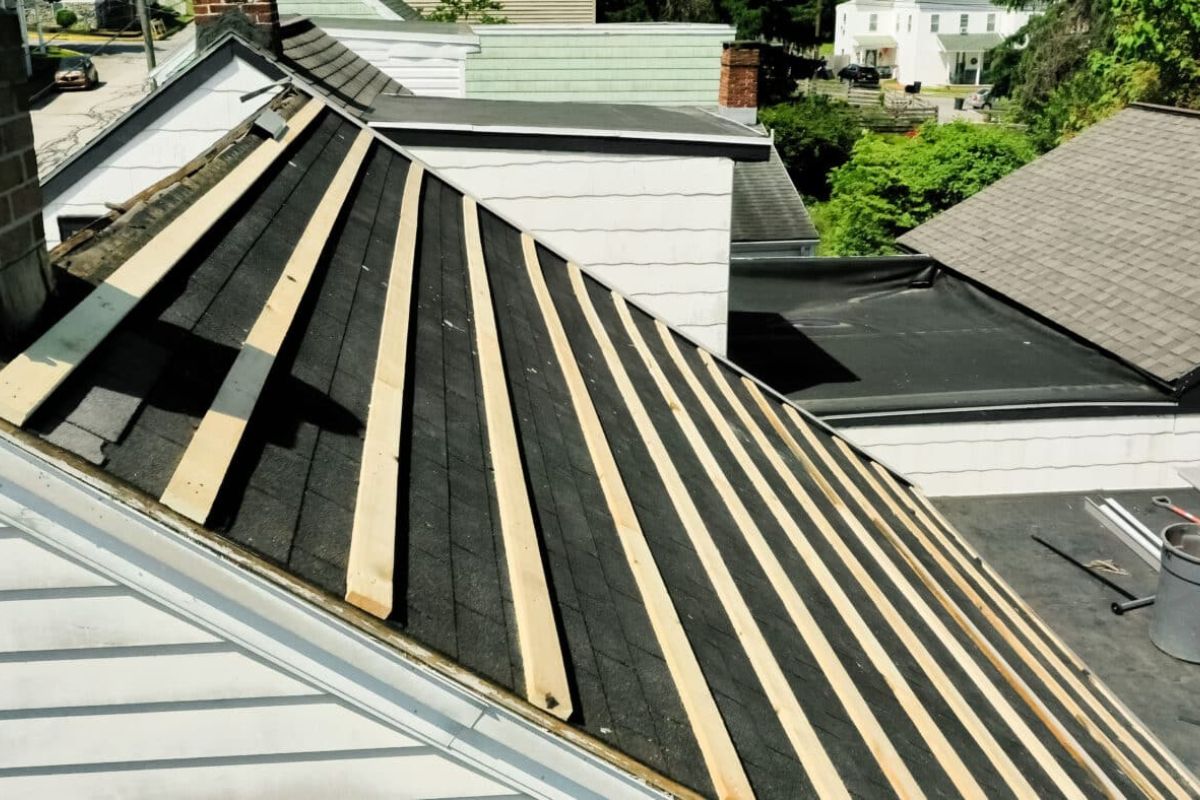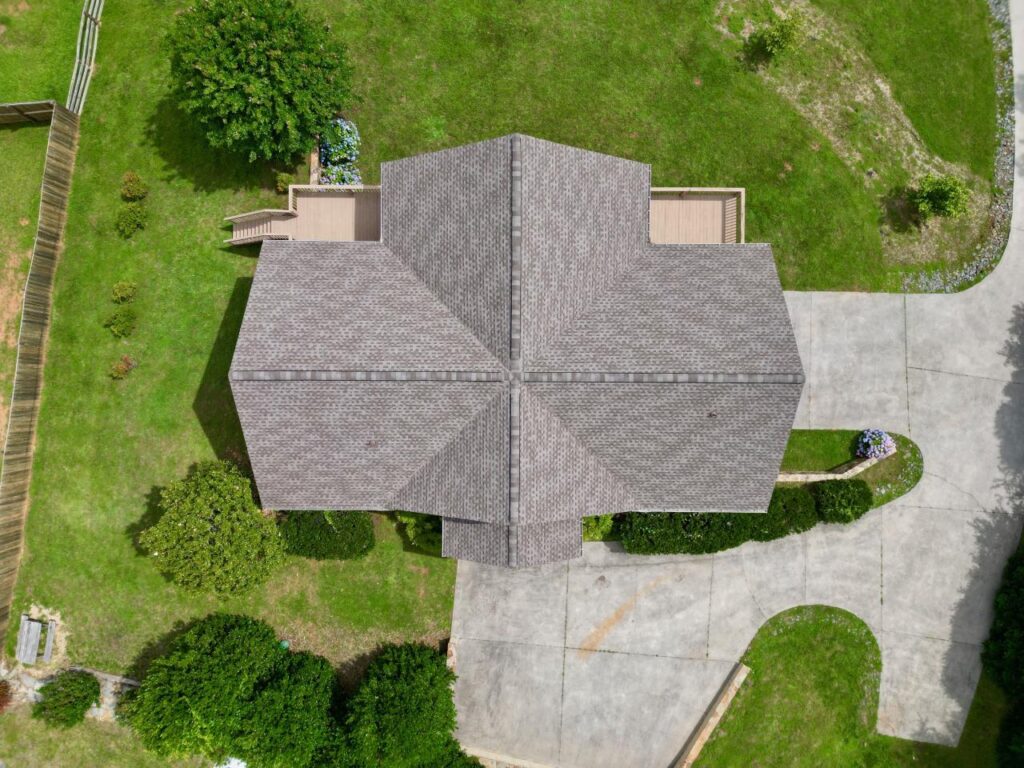Getting your roof replaced involves a 5-step process: planning, permits, preparation, installation, and cleanup. Most homeowners spend $9,000-$15,000 for asphalt shingle replacement, which takes 1-2 days for average homes under 2,500 square feet.
Roof replacement affects your home’s structure, value, and protection. New roofs last 20-50 years depending on materials. Professional installation follows building codes and manufacturer specifications. Homeowners must obtain permits, prepare their property, and hire licensed contractors for safe, legal work.
What Are the Signs You Need Roof Replacement?
Your roof needs replacement when it shows structural damage, age-related wear, or persistent leaks. Most roofs require replacement after 20-25 years of service. Storm damage, missing shingles, and water stains indicate immediate replacement needs.
Specific replacement indicators include:
- Shingles curling or cracking
- Water stains on ceilings
Age determines replacement timing for different materials. Asphalt shingles last 15-30 years, metal roofs last 40-70 years, and slate roofs last 100+ years. Weather exposure accelerates wear in coastal areas and regions with severe storms.
How Much Does Roof Replacement Cost in 2025?
Roof replacement costs $9,500-$30,680 for average homes, with asphalt shingles ranging $7-$12 per square foot installed. Material costs account for 35-40% of total expense, labor represents 60% of project cost.
Cost breakdown by home size:
| Home Size | Asphalt Shingles | Metal Roofing | Slate/Tile |
| 1,500 sq ft | $7,200-$11,000 | $12,000-$18,000 | $20,000-$35,000 |
| 2,000 sq ft | $9,600-$14,700 | $16,000-$24,000 | $27,000-$47,000 |
| 2,500 sq ft | $12,000-$18,400 | $20,000-$30,000 | $34,000-$59,000 |
Additional costs include permits ($100-$1,000), disposal fees ($500-$1,500), and structural repairs if needed. Complex roofs with multiple angles, chimneys, or skylights increase labor costs by 20-30%.
Geographic location affects pricing significantly. Metropolitan areas charge $2-$4 more per square foot than rural regions. Coastal cities like Seattle, San Francisco, and Miami show premium pricing due to higher living costs and stricter building codes.
Which Roofing Materials Should You Choose?
Asphalt shingles are the most popular choice, covering 75% of American homes due to affordability and 20-30 year lifespan. Material selection affects cost, durability, and installation time.
Asphalt Shingle Options
Asphalt shingles come in two main types:
- 3-tab shingles: Flat appearance, 15-25 year lifespan, $3-$5 per square foot
- Architectural shingles: Dimensional look, 25-30 year lifespan, $4-$7 per square foot
Metal Roofing Benefits
Metal roofs offer superior durability and energy efficiency. Steel, aluminum, and copper options provide 40-70 year lifespans. Metal reflects heat, reducing cooling costs by 10-25%. Installation costs $8-$16 per square foot.
Premium Material Choices
Natural materials provide distinct aesthetics:
- Wood shingles: Cedar or redwood, 20-40 year lifespan, $6-$12 per square foot
- Slate tiles: Natural stone, 100+ year lifespan, $15-$25 per square foot
- Clay tiles: Mediterranean style, 50+ year lifespan, $10-$18 per square foot
Do You Need Permits for Roof Replacement?
Building permits are required for full roof replacement in most municipalities. Licensed contractors handle permit applications, which take 1-2 weeks for approval. Permit costs range $100-$1,000 based on project value and local requirements.
Permit requirements vary by location and scope:
- Full replacement: Always requires permits
- Structural changes: Permits mandatory for deck repairs or additions
- Minor repairs: Under 10% of roof area typically exempt
- Historic districts: Special permits may apply
Permit Application Process
Licensed contractors submit applications including:
- Detailed project plans
- Material specifications
- Structural calculations if needed
- Homeowner information
- Contractor license verification
Building departments review applications for code compliance. Inspections occur during and after installation. Failed inspections delay project completion and may require corrections.
Working without permits creates legal issues. Violations result in fines, work stoppages, and insurance claim denials. Unpermitted work affects home resale value and may require removal.
How Long Does Roof Replacement Take?
Most roof replacements take 1-2 days for asphalt shingles on average homes under 2,500 square feet. Installation time depends on roof size, complexity, weather conditions, and material type.
Timeline by Material Type
Different materials require varying installation periods:
- Asphalt shingles: 1-2 days
- Metal roofing: 2-4 days
- Wood shingles: 4-6 days
- Slate or tile: 6-8 days
Factors Affecting Installation Speed
Several elements impact completion time:
- Roof size: Larger roofs require additional days
- Roof pitch: Steep slopes slow installation
- Weather conditions: Rain or high winds halt work
- Crew size: More workers reduce timeline
- Access difficulty: Limited access extends project time
Complex roofs with multiple levels, dormers, or skylights add 1-2 days to standard timelines. Structural repairs discovered during tear-off create additional delays.
How Do You Prepare Your Home for Roof Replacement?
Home preparation involves clearing outdoor areas, protecting interior spaces, and planning for noise disruption. Proper preparation prevents damage and facilitates efficient installation.
Exterior Preparation Steps
Clear your property before work begins:
- Remove vehicles from driveways and garages
- Cover delicate plants with tarps or plywood
Interior Preparation Requirements
Protect your home’s interior from vibrations:
- Remove wall hangings from exterior walls
- Clear fragile items from attic spaces
Noise Management Planning
Roof replacement creates significant noise levels. Hammering, nail guns, and tear-off activities produce 80-90 decibels. Schedule important calls or meetings elsewhere during installation hours.
What Happens During the Roof Replacement Process?
Roof replacement follows an 8-step process: material delivery, property protection, tear-off, deck inspection, installation, cleanup, and final inspection. Professional crews complete each phase systematically.
Day 1: Preparation and Tear-Off
Installation begins with setup and protection:
- Materials arrive on-site
- Crews install property protection tarps
- Dumpsters position for debris collection
- Old roofing materials removed layer by layer
- Roof deck inspected for damage
Day 2: Installation and Completion
New roof installation proceeds systematically:
- Damaged decking replaced as needed
- Underlayment installed for waterproofing
- Flashing installed around penetrations
- Shingles installed from bottom to top
- Ridge caps complete the installation
Quality Control and Cleanup
Professional crews conduct thorough cleanup:
- Magnetic sweeps remove nails and metal debris
- Gutters cleared of installation materials
- Property inspected for damage
- Warranty documents provided
- Final walkthrough with homeowner
What Should You Look for in a Roofing Contractor?
Professional roofing contractors possess proper licensing, insurance, and local references. Verify credentials before signing contracts. Get written estimates from 3-5 contractors for price comparison.
Contractor Qualification Checklist
Essential contractor qualifications include:
- Valid state contracting license
- General liability insurance ($1 million minimum)
Warning Signs to Avoid
Avoid contractors who display these red flags:
- Door-to-door sales approaches
- Demand full payment upfront
Check references from recent projects within 3-6 months. Contact previous customers about work quality, timeline adherence, and cleanup completion.
How Do You Handle Weather Delays and Complications?
Weather delays are common during roof replacement, with rain, snow, and high winds stopping work immediately. Professional contractors monitor forecasts and adjust schedules accordingly.
Weather-Related Precautions
Contractors take specific weather precautions:
- Tarps cover exposed areas during breaks
- Weather forecasts guide daily planning
- Work stops completely during precipitation
- High winds above 25 mph halt installation
- Temperature affects shingle sealing properties
Unexpected Issue Management
Hidden problems often emerge during tear-off:
- Rotted roof decking requires replacement
- Structural damage needs engineering evaluation
- Inadequate ventilation may require upgrades
- Electrical or plumbing conflicts need resolution
Professional contractors document issues with photos and provide change order estimates before proceeding with repairs.
What Maintenance Does Your New Roof Need?
New roofs require annual inspections, gutter cleaning, and prompt repair of minor issues. Proper maintenance extends roof lifespan and maintains warranty coverage.
Annual Maintenance Tasks
Regular maintenance includes:
- Visual inspections after storms
- Gutter cleaning twice yearly
Warning Signs Requiring Professional Attention
Contact contractors for these issues:
- Missing or damaged shingles
- Water stains on ceilings
Most manufacturers require professional maintenance records for warranty claims. Document all inspections and repairs with photos and receipts.
Final Thoughts
Roof replacement protects your home investment and provides decades of weather protection when done correctly. Professional installation following local building codes delivers optimal results.
Success depends on proper planning, qualified contractors, and realistic expectations. Budget for quality materials and skilled labor. Schedule projects during favorable weather seasons for best results.
Ready to start your roof replacement? Contact experienced professionals who handle permits, installation, and cleanup. Quality workmanship and materials provide long-term value and peace of mind.

